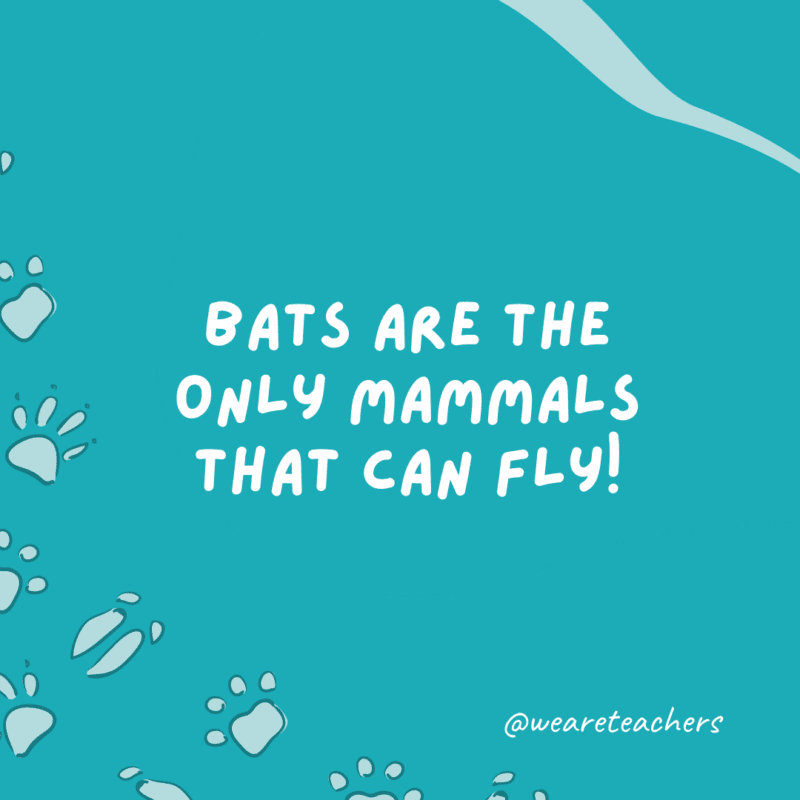Animals can be cute, cuddly, fast, smart … and gross, but they’re all pretty amazing! Kids love learning about animals, so these amazing animal facts are perfect for sharing with your students. Post one during your morning meeting or share them all during a science lesson.
Amazing Animal Facts for Kids
The regal horned lizard has a gross way of repelling attackers. They squirt blood out of their eyes!

It’s really gross, but if you want to see the lizard in action, check out this video from Animal Planet.
There are over 470 million dogs in the world. That’s 1 dog for every 16 people!

Scientists estimate that dogs were domesticated (made human-compatible) 15,000 years ago. Learn more about different dog breeds in this video.
Polar bears are not really white. Their fur is actually transparent.
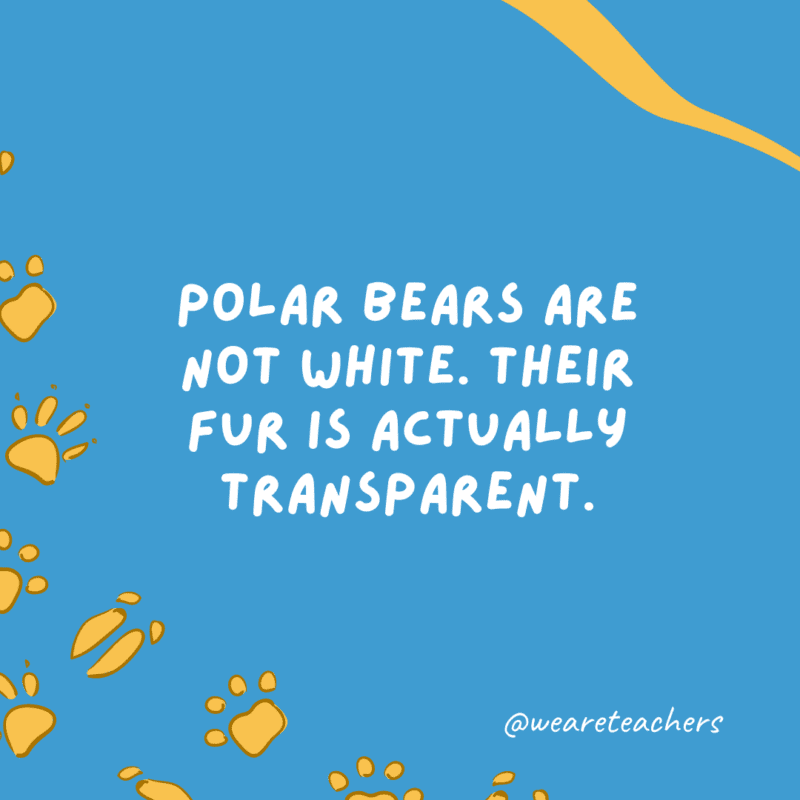
Learn more about how polar bears are unique in this video.
An ostrich’s eyes are bigger than its brain.
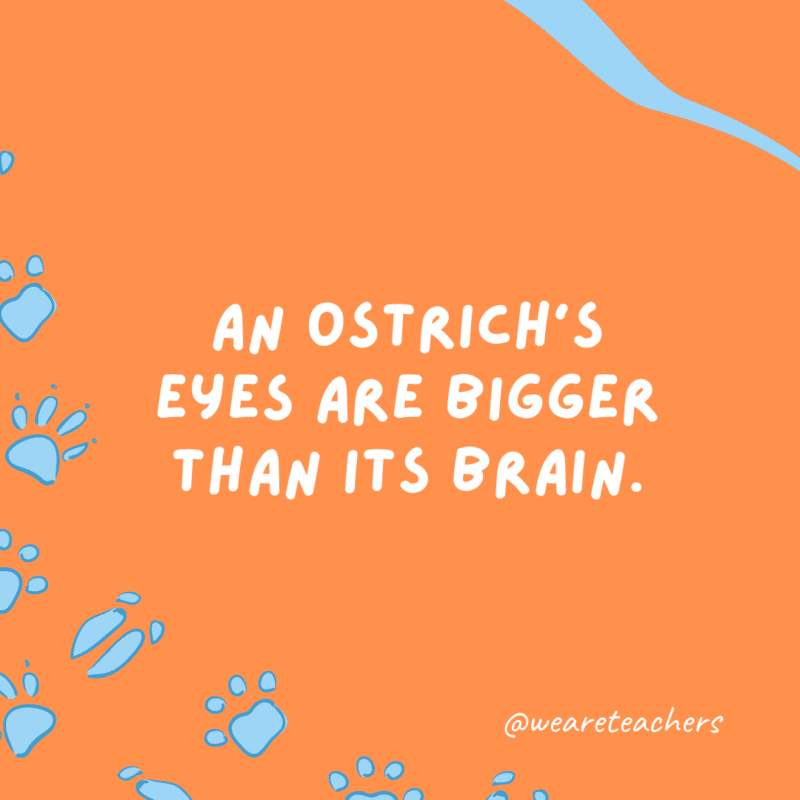
The ostrich’s eyes are about the size of billiard balls. They take up so much room in the skull that the brain is actually smaller than either one of the eyeballs. Learn more fun facts about ostriches in this video from Animals for Kids.
Bats are the only mammals that can fly.
Learn more facts about bats in this video from SciShow Kids.
Some hummingbirds weigh less than a penny.

A penny can weigh up to four grams, but some hummingbirds weigh only two grams! Learn more about hummingbirds in this video from All Things Animals TV.
Dragonflies can see in all directions at the same time.
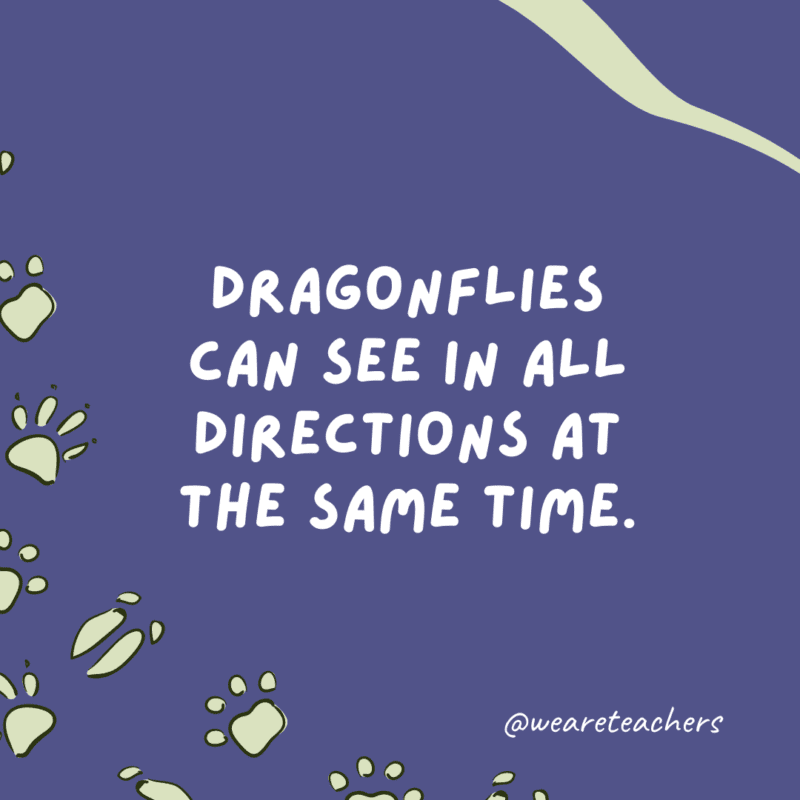
Learn more facts about dragonflies in this video from SciShow Kids.
Bats have thumbs.

The thumb usually has a substantial claw, which is used for climbing, food handling, and more.
Gorillas burp when they’re happy!

Learn more about amazing gorillas in this video from Nat Geo Kids.
A giraffe has seven bones in its neck.
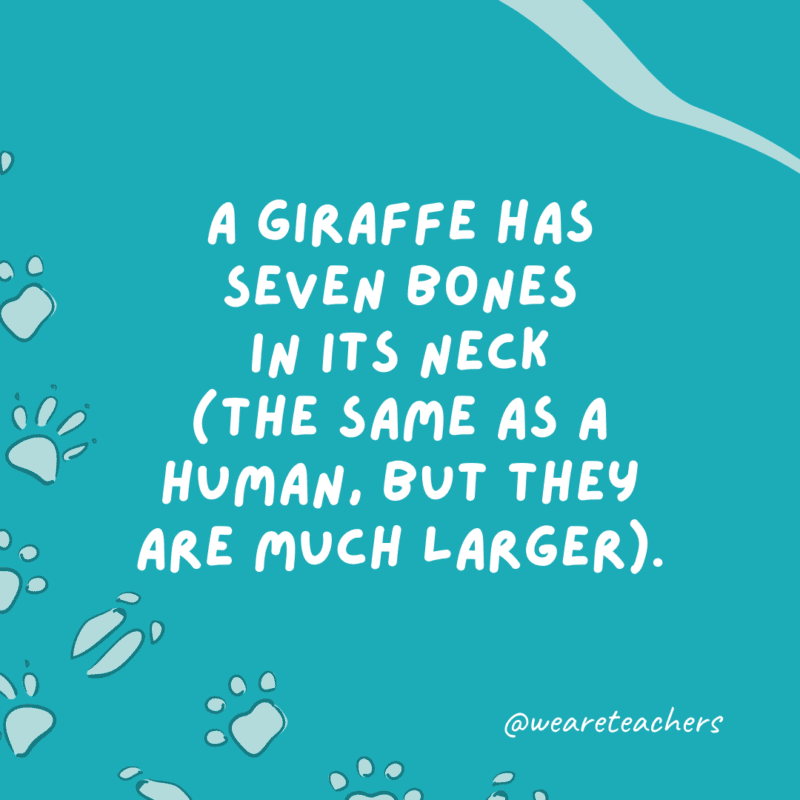
That’s the same number as humans have, but giraffes’ are much larger. Learn more giraffe facts in this video from Homeschool Pop.
Sharks lay the biggest eggs in the world.

Learn more cool facts about sharks in this video from Nat Geo Kids.
Cheetahs only need to drink once every three to four days.

Learn more cheetah facts in this video from Nat Geo Kids.
You can tell the age of a whale by looking at the wax plug in its ear.

Much like tree rings, whale earwax accumulates in layers, adding a layer about every six months. By slicing up the wax, a scientist can estimate a whale’s age.
Gorilla noseprints are as unique as human fingerprints.
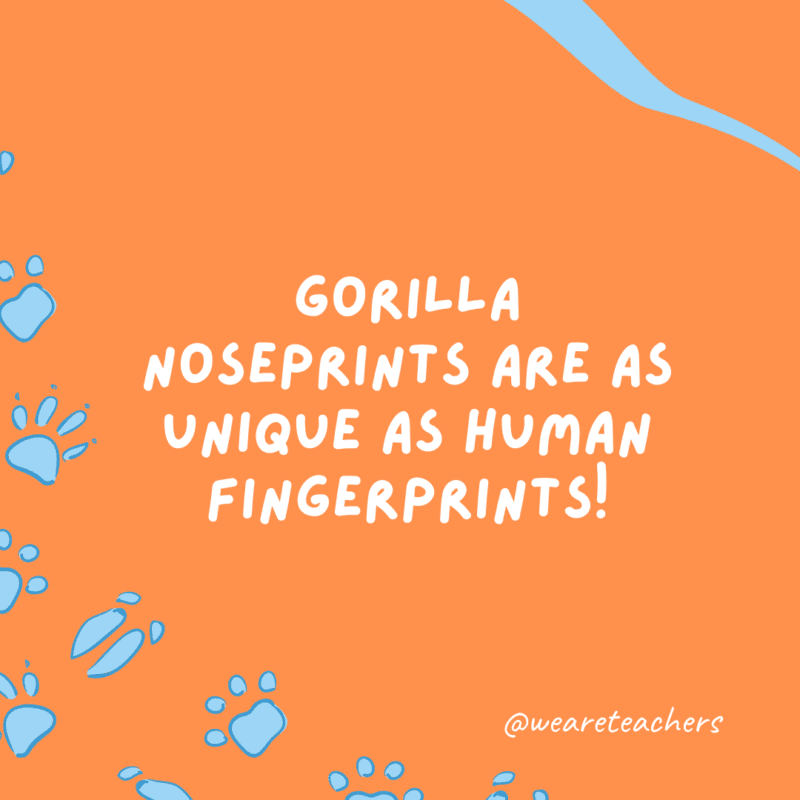
Learn more cool gorilla facts in this video from Nat Geo Kids.
Male rhinos are called bulls, and female elephants are called cows.

In fact, a lot of animal species use these same names, including alligators, camels, dolphins, and reindeer.
A tiger’s roar can be heard as far as 3 kilometers (2 miles) away.

Learn more cool tiger facts in this video from Homeschool Pop.
Walruses can sleep in water.

Walruses sleep around 19 or 20 hours a day! They can sleep in water and on land, although they sleep for longer periods on land.
Giant anteaters can eat over 30,000 insects a day.
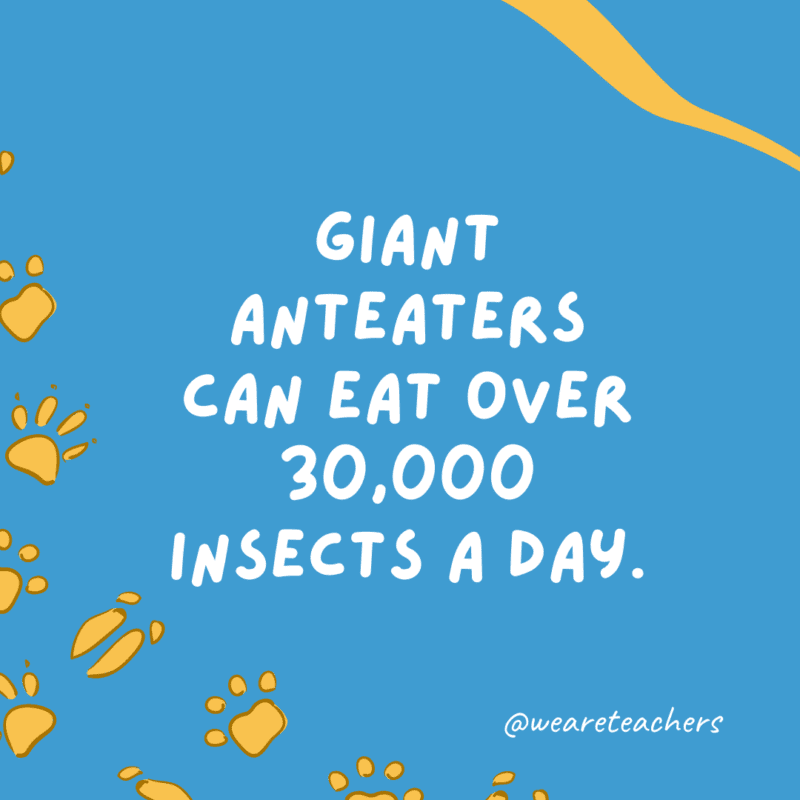
Anteaters primarily eat ants and termites, and gosh they eat a lot!
Starfish have no brain and no blood. And they aren’t even fish!

Learn 10 more facts about starfish in this video.
Baby elephants are able to stand within 20 minutes of being born.

Learn more fun facts about elephants in this video from Homeschool Pop.
Reindeer grow new antlers every year.

Both male and female reindeer grow antlers, and the antlers are like our fingerprints—no two are alike!
Sloths are so slow that in their native climate, algae actually grows on their fur.

This is a symbiotic relationship. The sloth provides the algae with shelter and water. The algae provide the sloth with camouflage and extra nutrients.
Some land snails can sleep for up to three years in hibernation or aestivation.

Snails need moisture to survive. If the weather is bad, it causes the snails to hibernate for a long time!
A grizzly bear’s bite is so strong that it can crush a bowling ball.
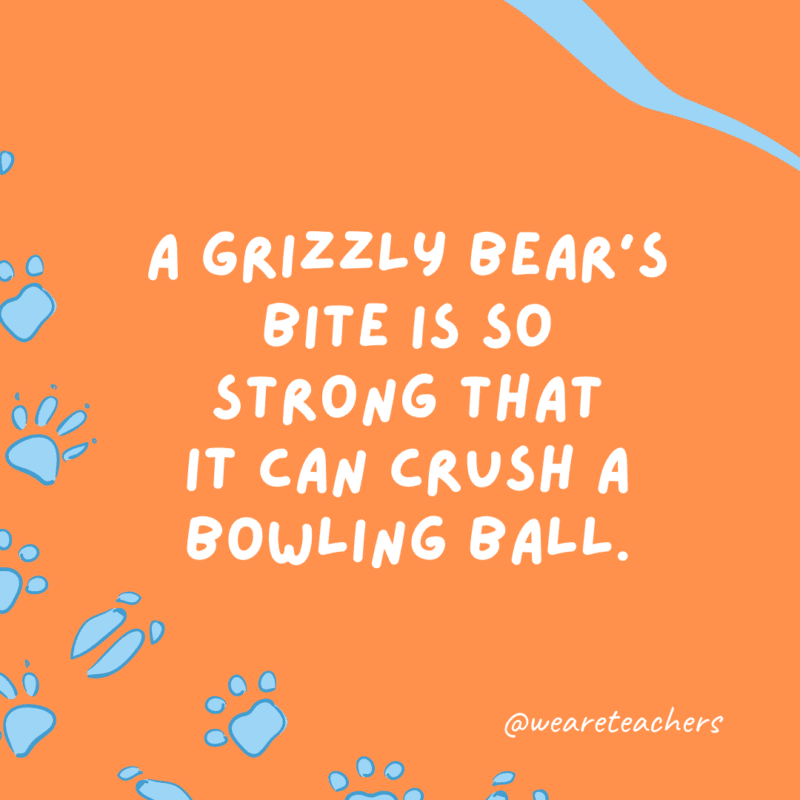
Learn more facts about grizzly bears in this video from Little Fox.
Rats laugh when being tickled.

They actually let out tiny giggles, too high for humans to hear.
There are no male or female earthworms.

While all earthworms have both male and female parts, they still need one of each to reproduce.
A jaguar’s night vision is six times better than a human’s.
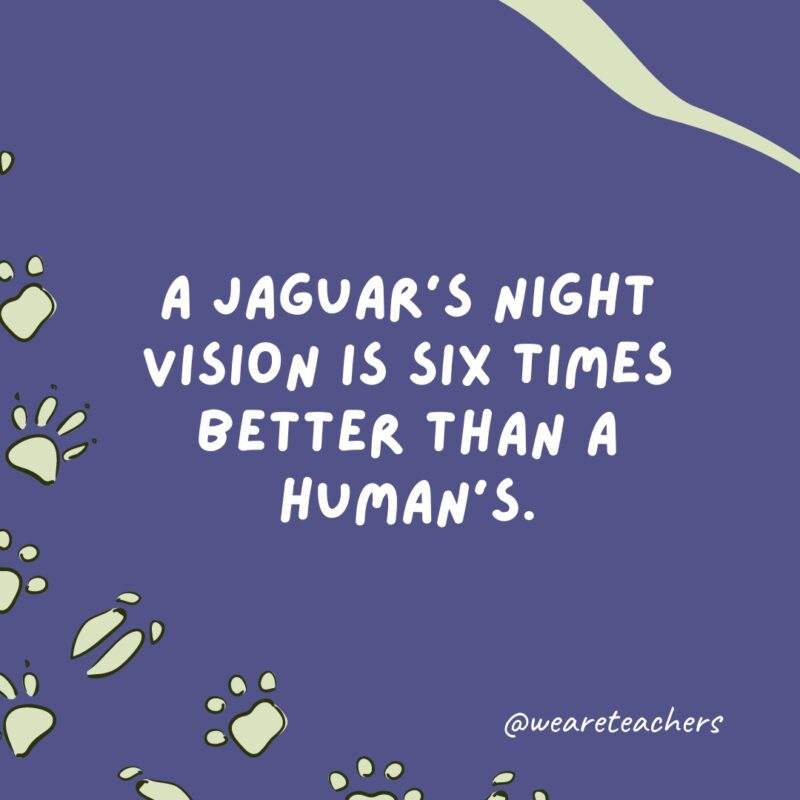
Watch this video from BBC Earth to learn more about how jaguars hunt at night.
A hummingbird’s wings can beat up to 200 times per second to hover.

See them fly, drink, shake, and more in this amazing slow-motion video from National Geographic.
Vampire bats have such sharp teeth that you may not feel them bite you.

On top of that, their saliva dulls pain, and they can feast on a victim’s blood for 30 minutes undetected!
Humans share 98.8% of chimpanzee DNA.
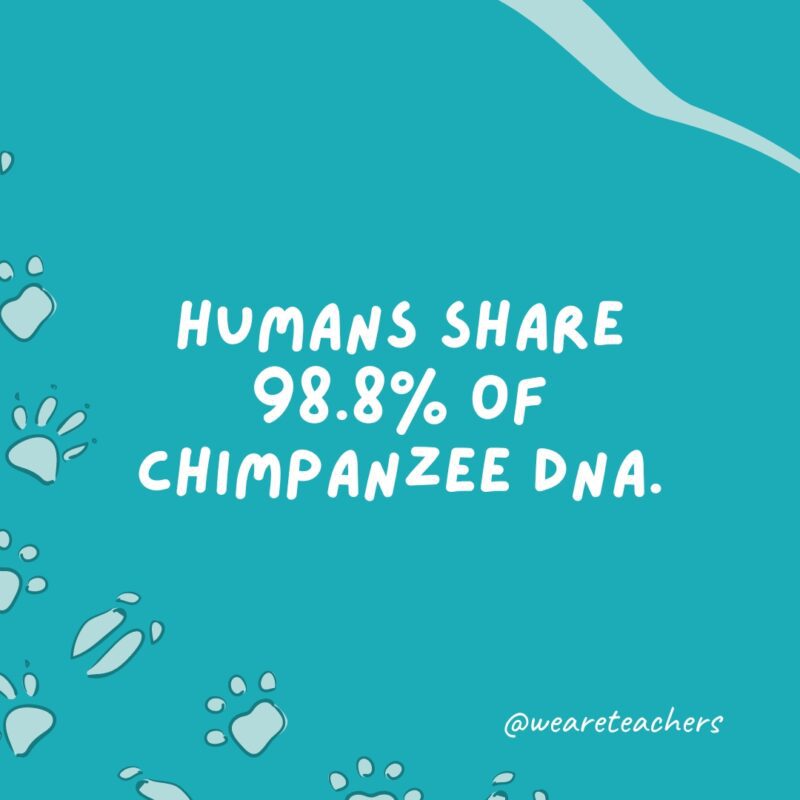
Despite these similarities, though, we still have around 35 million differences between us. Watch this BBC Reel about how chimpanzees are just like us!
A rhinoceros horn is made from compacted hair.

Shockingly, it’s not bone or another substance! Watch this video to learn more about why their horns are so valuable.
A cat can use its whiskers to check whether it will fit into a space.

They can measure if it’s too small for them to fit through! Watch this video about how cats use their whiskers.
A chameleon’s tongue is as long as its body.

This National Geographic video explains why their tongues are so powerful.
The hippo’s closest living relatives are whales, dolphins, and porpoises.
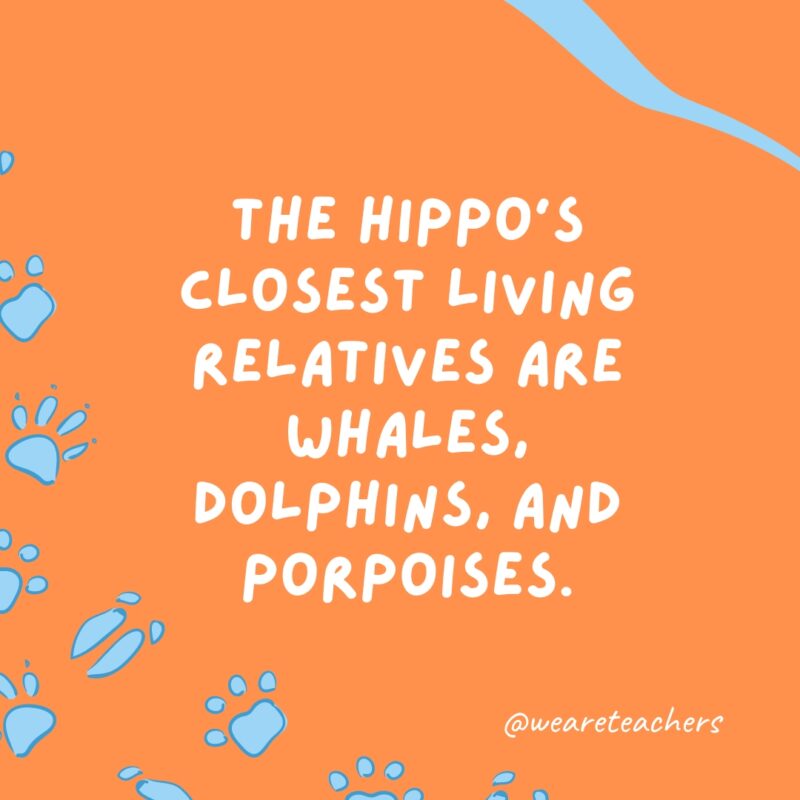
They share a lot with these aquatic mammals!
Adult bison are the largest land mammals in North America.

Watch this video to learn all about bison.
An eagle’s vision is four times sharper than a human’s.
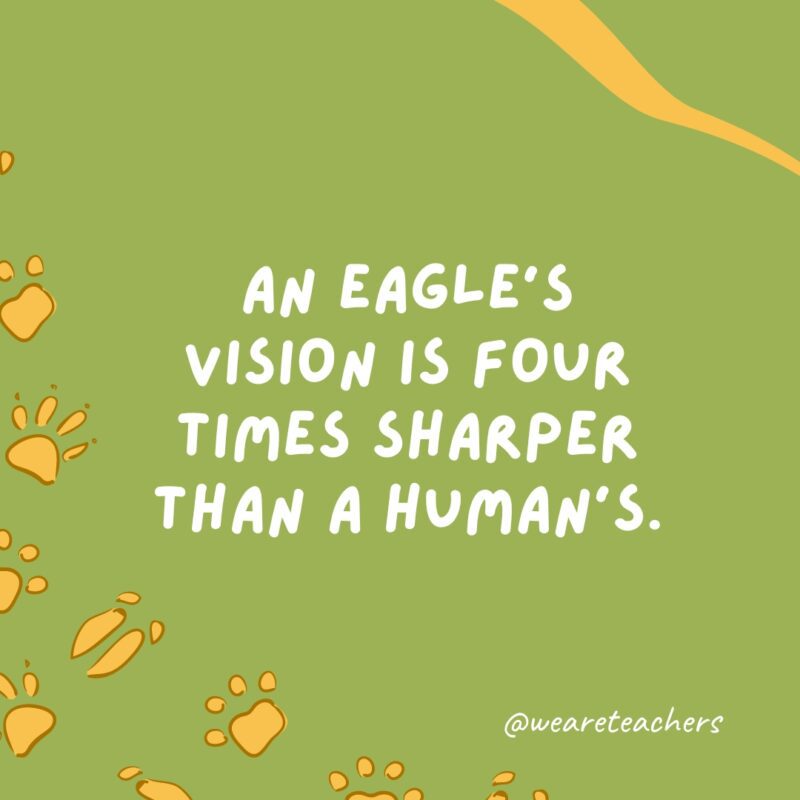
This interesting video explores what would happen if humans had eagle vision.
Nine-banded armadillos always give birth to identical quadruplets.

Watch this video to learn more about how armadillos give birth to these cute babies.
The giant tortoise of the Galapagos Islands weighs as much as a brown bear.

It can weigh up to 550 pounds. Watch this video for more facts about the giant tortoise.
Sea otters have the densest fur of any mammal.

While humans are covered in 5 million hairs, the large male sea mammal has around 800 million! This video explores the fantastic fur of sea otters.
Cat fleas have amazing jumping skills.

They can jump to a height of up to 60 times their own body length, but these incredible leaps require more than just muscle!
An emperor penguin can stay underwater for 27 minutes.

They can also dive as deep as 500 meters and speed-launch out of the water!
Both male and female pigeons produce milk for their babies.

Each produces crop milk, a substance used to feed their chicks. This is a rare ability among birds!
Camels can drink 50 gallons of water in one minute.

This video explains where they store it all!
Kiwis have nostrils at the end of their long beaks.

Learn more about the national bird of New Zealand from this video.
Blue whales make the loudest sound of any animal.
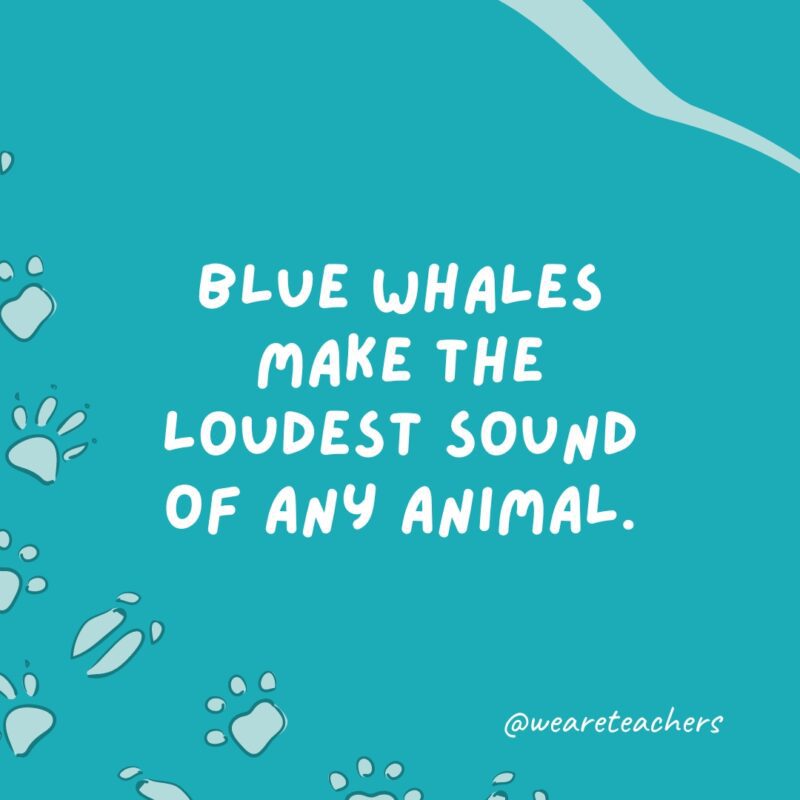
The remarkable sound, which registers at 188 decibels, can be detected almost 500 miles away! Learn more about the biggest, loudest animal on the planet.
A group of flamingos is called a flamboyance.

Watch this cool video from Nat Geo Wild to see flamingos with some serious dance moves!
Snakes can see with their eyes closed.

Check out this video about how snakes can see infrared with their pit organ.
Sheep have four stomachs.

Each one of them plays a role in digestion for grass-eating animals.
Only female mosquitos bite.
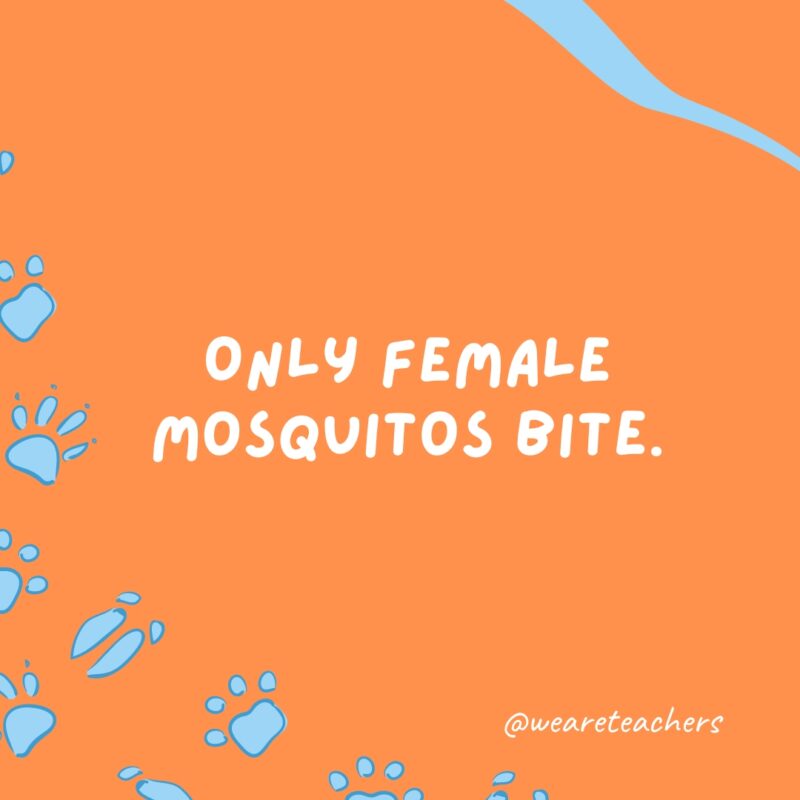
This video explains why!
Salamanders can regenerate body parts.

Incredibly, they can grow back their tail, limbs, and jaw!
Kiwis lay eggs that can weigh up to a quarter of their body weight.

National Geographic sheds light on the lives of kiwis in this video!
What are your favorite animal facts? Share in the comments below!
If you like these animal facts and want more articles like this, be sure to subscribe to our newsletters.


